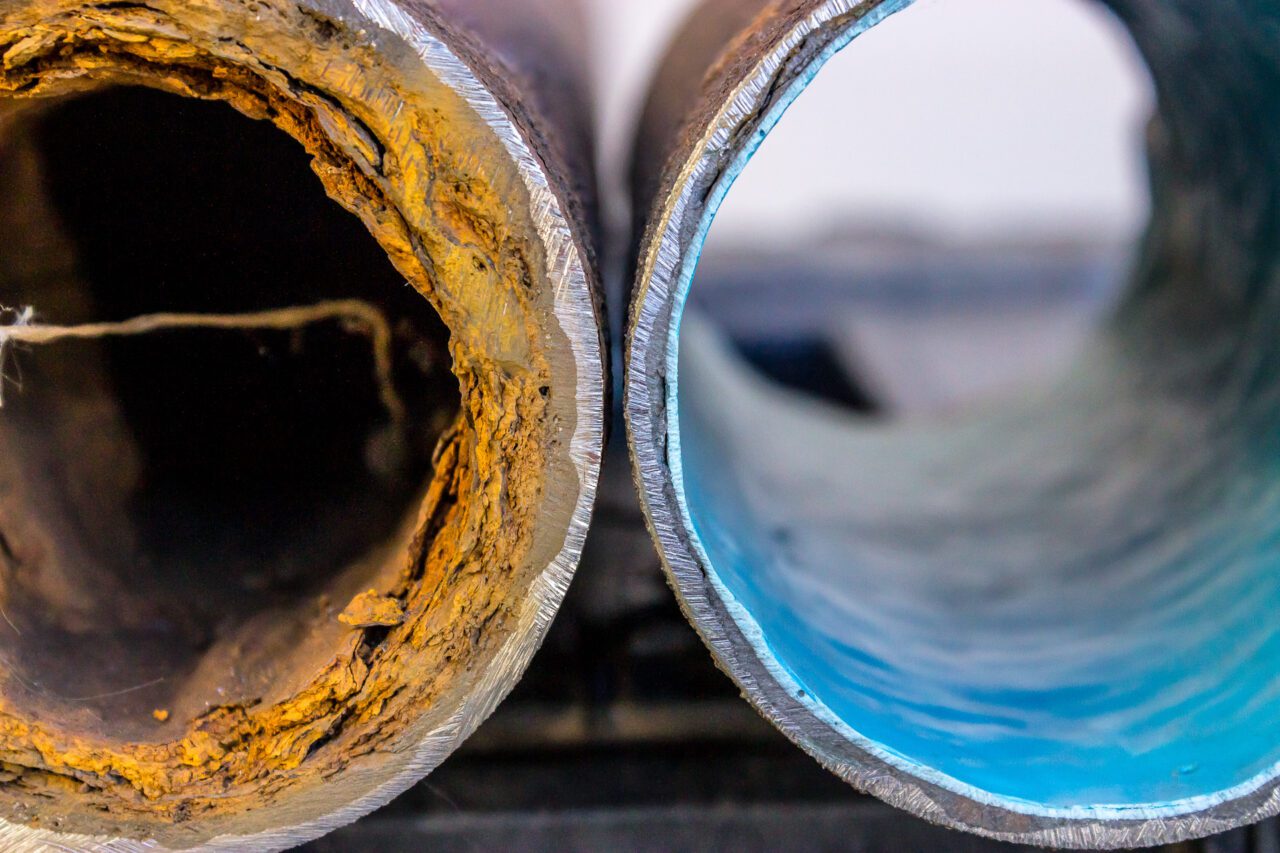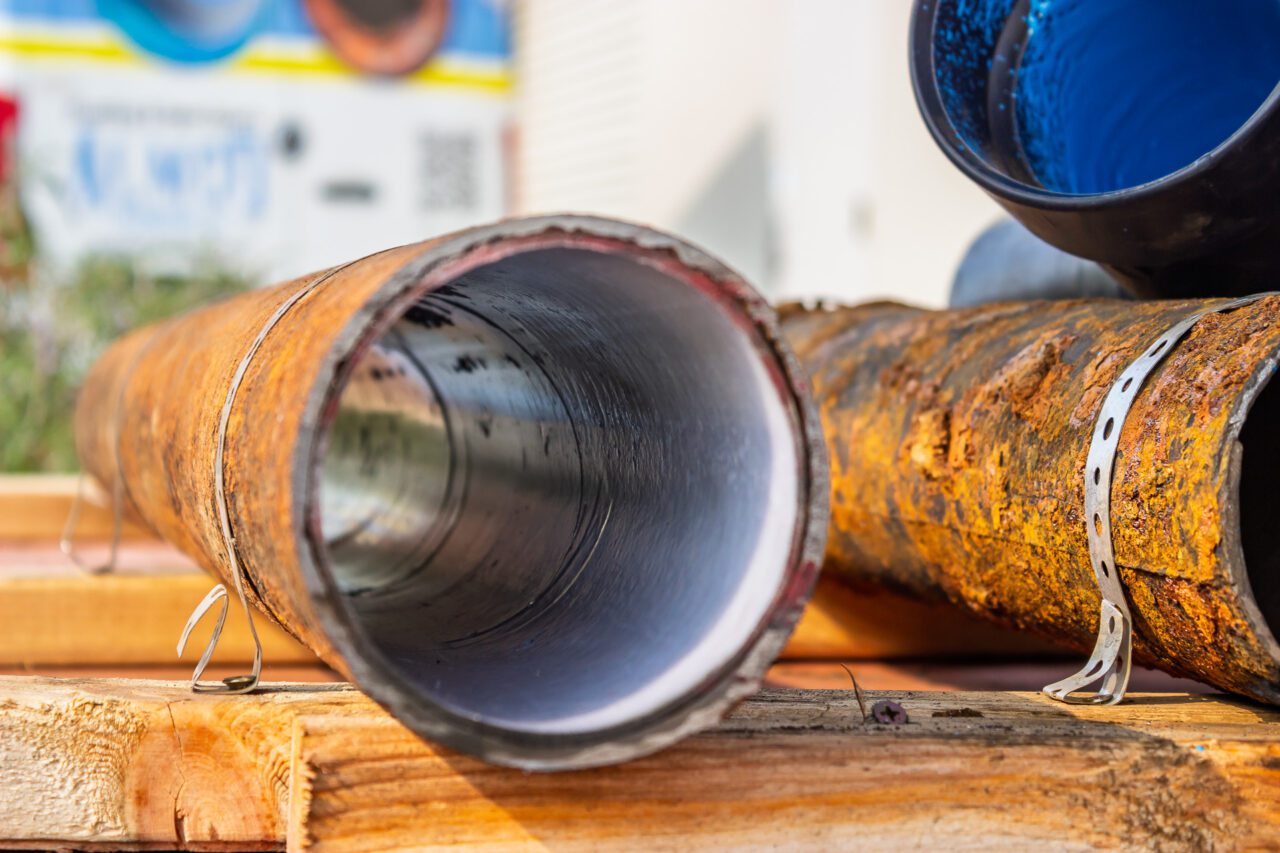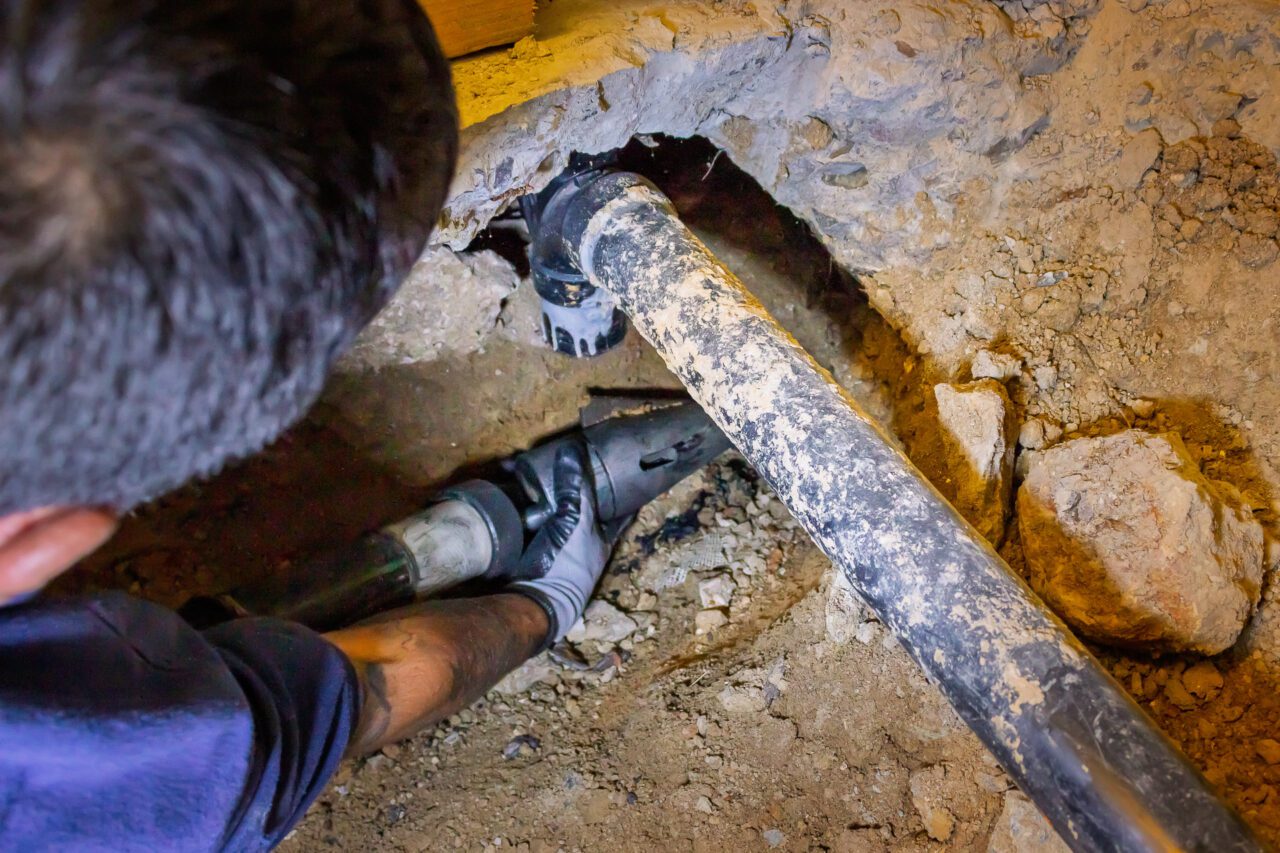Trenchless Sewer Repair Methods: Comparing Spray Epoxy Lining, CIPP, and Pipe Bursting
Trenchless sewer repair methods are transforming the way homeowners and contractors address underground pipe problems. These modern solutions offer cleaner, faster, and often more cost-effective alternatives to traditional excavation—eliminating weeks of disruption, torn-up landscaping, and expensive restoration work.
Techniques such as spray/brush epoxy lining (SIPP), cured-in-place pipe (CIPP), and pipe bursting allow technicians to repair or replace sewer lines with minimal digging and little to no surface damage. In this article, we’ll explore the most effective times to use each trenchless method and how they compare in terms of cost, durability, and repair time.
Contents
- Why Are Trenchless Sewer Repair Methods Better Than Digging?
- Spray/Brush Epoxy Lining (SIPP): When It’s the Right Choice
- CIPP Lining (Cured-in-Place Pipe): When to Use It for Sewer Repair
- Pipe Bursting: When the Old Pipe Is Beyond Saving
- Which Trenchless Sewer Repair Method Is Better for You: Comparison Table
- Frequently Asked Questions (FAQ)
Why Are Trenchless Sewer Repair Methods Better Than Digging?
Trenchless sewer repair and replacement technologies restore the functionality of damaged sewer systems or replace old pipes with new ones—without the need for large-scale excavation.
While installing a completely new sewer system through traditional digging can be the most thorough solution, it often requires tearing up floors, driveways, or landscaping, which significantly increases project costs and disruption. Many homeowners are looking for faster, less invasive alternatives. That’s why roughly 90% of our customers choose partial or complete trenchless rehabilitation.
Trenchless methods require only one or two small access points to reach the problem area, avoiding the need to expose the entire pipe run. This means:
- Far less digging
- Minimal disturbance to your yard, driveway, or interior floors
- Lower restoration costs after the repair
In urban environments—where underground utilities, tight spaces, and costly surface finishes make excavation challenging—trenchless repair is often the superior choice. While both trenchless and traditional digging aim to restore damaged or aging sewer lines, their methods, timelines, and impacts are entirely different.
The benefits of trenchless sewer repair are hard to ignore:
- Minimal Damage to Property & Landscape. Trenchless methods require only small access points, leaving your interior, driveway, lawn, garden, and patio untouched. No need to tear up your yard just to reach the pipes.
- Faster Completion Time. Most trenchless repairs are completed in just one to two days, compared to several days—or even weeks—for traditional excavation and restoration.
- Lower Long-Term Costs. While trenchless technology can have a higher upfront cost, it saves significantly in the long run by avoiding expensive landscape and property repairs.
- Longer-Lasting Result. CIPP and SIPP linings create seamless, corrosion-resistant pipes with a lifespan of 50+ years—outperforming traditional cast iron pipes.
- Less Disruption & Noise. The process is quieter and less intrusive for both homeowners and neighbors, as it does not require heavy excavation equipment or prolonged digging.
- Ideal for Urban & Hard-to-Reach Areas. In cities like San Diego, where homes and underground utilities are close together, trenchless methods are often the only practical solution.
Trenchless sewer repair is efficient, durable, and minimally disruptive—making it a smart choice for many homeowners and property managers.
There are three main trenchless sewer repair or replacement methods:
- CIPP Inversion/Pull-in-Place
- Spray or Brush Epoxy Lining (SIPP)
- Pipe Bursting
While these technologies differ in application and ideal use cases, they share some similarities in preparation. All require far less time for pipe restoration compared to open-cut excavation. And while they may appear more expensive initially, they often result in substantial savings thanks to the elimination of costly landscape restoration.
Each method comes with its own advantages, disadvantages, and best-use scenarios—details we’ll cover next.
Spray/Brush Epoxy Lining (SIPP): When It’s the Right Choice
The spray or brush-applied epoxy pipe lining method is a versatile trenchless repair option for sealing holes, cracks, and minor defects—particularly at the bottom of the pipe or around connection ports. Using specialized equipment, technicians apply an even coat of epoxy resin inside the pipe. Once cured, this creates a smooth, seamless, waterproof lining that seals damage and protects against future corrosion or buildup.
This method can be performed through almost any access point and works well for sewer and drain pipes with diameters of two to three inches or more. It is especially useful in complex pipe layouts, including areas with multiple branches, connections, and tight turns—up to 90°. While it cannot restore pipes with severe structural cracks, it is highly effective for sealing couplings, preventing clogs, and stopping root intrusion.
The result is a corrosion-resistant interior surface that can extend a pipe’s lifespan by 50+ years.
Advantages
- Prevents clogs and root intrusion
- Repairs small cracks, holes, and invisible defects
- Handles pipe angles up to 90°
- Seals fittings, splits, and couplings
Disadvantages
- Does not add structural strength to the pipe
- Cannot repair severe damage or missing pipe sections
CIPP Lining (Cured-in-Place Pipe): When to Use It for Sewer Repair
CIPP lining restores damaged sewer pipes by creating a new structural pipe inside the old one. A liner saturated with epoxy is inserted—either pulled into place or inverted using an air-pressure inversion machine. Once positioned, the liner is cured, forming a strong, seamless layer bonded to the host pipe.
This process seals cracks, bridges gaps, and restores structural integrity. It’s especially effective for long, straight pipe sections with partial damage. With a special connection liner kit, CIPP can also rehabilitate Y-connectors.
Compared to spray or brush epoxy lining, CIPP can handle more severe damage because it reinforces the pipe’s structure rather than just coating it.
Advantages
- Repairs more extensive damage than spray/brush methods
- Adds structural reinforcement to the existing pipe
Disadvantages
- Limited in the length that can be lined at one time
- Y-connectors require a special liner kit
- Minor risk of root intrusion if branch connections are not fully sealed
Pipe Bursting: When the Old Pipe Is Beyond Saving
Pipe bursting is the most powerful trenchless replacement method, ideal when the existing pipe is severely damaged or completely failed. Using a specialized tool with a bursting head, technicians break apart the old pipe while simultaneously pulling a brand-new HDPE pipe into place.
Unlike lining methods, pipe bursting completely replaces the old pipe and can even increase its diameter, improving flow capacity. It is not affected by the old pipe’s condition but does require straight sections with access points at both ends.
Because it involves fracturing the old pipe outward, pipe bursting must be performed at least two inches away from other underground utilities (such as electrical or gas lines) and requires adequate space at access points.
Advantages
- Works on pipes in any condition, including complete failure
- Allows for a larger-diameter replacement pipe
- Handles a few 45° turns or a single 90° turn
Disadvantages
- Requires precise knowledge of surrounding utilities
- Needs more working space at entry and exit points
What Type of Trenchless Sewer Repair Method Should I Use?
There is no single “best” trenchless sewer repair method. The right choice depends on factors such as:
- Pipe material and condition
- Age of the system
- Location and surroundings
- Severity and type of damage
- Customer budget and requirements
General guidelines:
- Spray/Brush Epoxy Lining (SIPP)—Best for 2-inch pipes with many turns, splits, or couplings where leaks occur at multiple connections. Ideal for sealing small cracks and holes without adding structural reinforcement.
- CIPP Lining—Suitable for more severe damage or misaligned pipes. Adds structural support and seals larger cracks or holes caused by corrosion, root intrusion, or heavy wear.
- Pipe Bursting—The go-to option for pipes beyond repair. Completely replaces the old pipe with a new one, often increasing its diameter. Works well for long runs of deteriorated pipe.
Trenchless Sewer Repair Method Comparison
| Method | Structural Repair | Preferred Pipe Size | Installation Time | Invasiveness | Cost per Foot | Most Feasible Use Cases |
|---|---|---|---|---|---|---|
| Spray/Brush Lining | Small cracks and holes | 2”–4” | Few hours to 1–3 days | Minimal | $140–$180 | Minor damage, multiple connections and turns |
| CIPP Lining | Medium to full structural | 2”–18” | 1–4 days | Limited | $120–$180 | Severe damage, misalignment, root intrusion |
| Pipe Bursting | Complete replacement | 2”–6” | 1–2 days | Higher (requires space) | $110–$145 | Full pipe replacement, long deteriorated runs |



